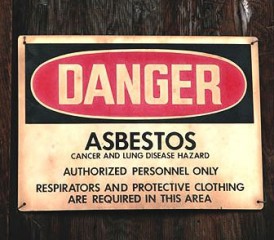Mesothelioma Survivor: Understanding the Dangers of Asbestos
Awareness & ResearchWritten by Tamron Little | Edited By Walter Pacheco

Before I was diagnosed with peritoneal mesothelioma, I didn’t even know what asbestos was. Let me remind you, I was a 21-year-old new mom and college student. I hadn’t even heard of mesothelioma cancer.
It’s a fact that mesothelioma comes from exposure to asbestos, so I know you may be wondering, “Well how in the world did you get it?” To this day, I still don’t know.
I have worked in health care for four years now. This allows me to help others and their family members. I’m able to extend compassion and offer inspiration, being that I have been on both sides of the spectrum – the patient and the caregiver.
Now I’d like to share my history with asbestos and mesothelioma and help others know what to look out for.
My History of Asbestos Exposure
Trying to figure out where I was exposed to asbestos was very challenging. Mesothelioma patients are usually older and know where they were exposed. As for me, I was clueless.
I thought to myself, I’m young, how in the world did I come into contact with asbestos? I did get a lawyer who brought in a private investigator to try to pinpoint where the asbestos exposure occurred.
The investigator’s findings noted these things:
- Secondhand exposure had to have occurred when I was a toddler.
- It was possibly linked to products used by my granddad for his construction job.
- It could be linked to paint or chemicals used in the old apartments I lived in around that age.
- I could have come into contact with other asbestos-containing products used in the construction industry.
My new knowledge of asbestos does urge me to keep my guard up. When it came time to buy a home, I knew I wanted an already built one that wasn’t too old and one that didn’t need any work done to it at all. This is because of the risk of being exposed to asbestos, especially in homes built before the 1980s.
What Is Asbestos?
According to the Occupational Safety and Health Administration, “Asbestos is the name given to a group of naturally occurring minerals that are resistant to heat and corrosion.” It has been used in all kinds of household and commercial products.
Breathing in asbestos fibers can damage the lungs and cause asbestos-related diseases such as asbestosis, lung cancer and mesothelioma.
Items that may contain asbestos include, but are not limited to:
- Insulation in walls and attics
- Vinyl tiles used for floors
- Shingles
- Siding on houses
- Blankets that protect hot water pipes
- Fabrics that resist heat
- Car brakes
Raising Awareness About the Dangers of Asbestos
It is vital for everyone to know the dangers of asbestos and the harmful things it can do to people’s bodies.
Asbestos isn’t banned in the United States, but the U.S. government has controlled its use since the 1970s and it is no longer mined or processed here.
Even though its harmful effects are known, and different materials are banned, some are not. That’s the problem! If this substance is very hazardous, then why is it still legal to use it?
This is where mesothelioma awareness comes into play. I do believe that if more people knew about the dangers of asbestos and how it can affect them or their loved ones, then something can be done to move forward with a ban.
It’s kind of like, out of sight out of mind. A lot of people don’t know about it, so therefore not too many people are jumping on board to advocate for it.
You can do your part and raise awareness about the dangers of asbestos in your city or town and bring it to the forefront of the agenda in your county and state governments.
One thing to note is that there are many organizations and groups whose purpose is to bring awareness to this situation, but that’s not enough. There need to be more hands on deck and more people speaking about this matter.






